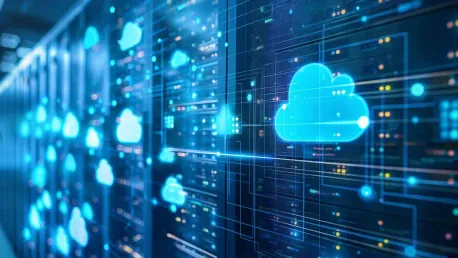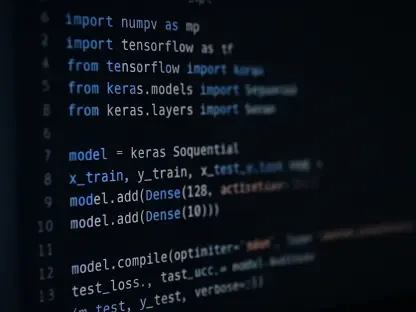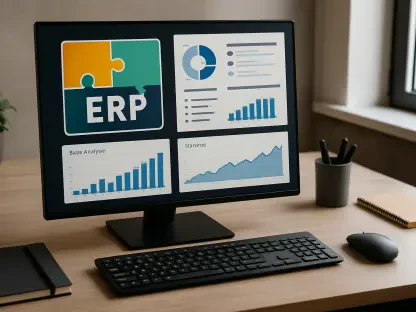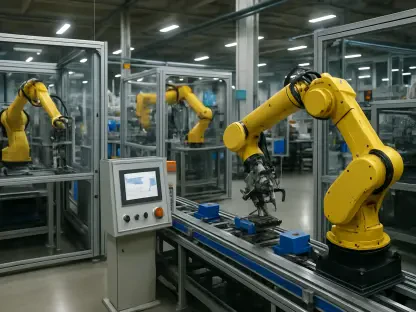The growing influence of DevOps in the realm of cloud computing is undeniable, with the increasing prominence of cloud-native architectures driven by microservices, containers, and dynamic orchestration. According to a Gartner statistic from 2023, by the same year, 85% of enterprise workloads will be cloud-based, stressing the need to reevaluate security protocols to mitigate intrinsic vulnerabilities associated with these modern, decentralized systems. This shift towards cloud-native architectures, while offering numerous benefits in terms of scalability and flexibility, also introduces significant challenges in maintaining secure DevOps pipelines.
Understanding the Core Challenges of Cloud-Native Security
In cloud-native environments, DevOps methodologies facilitate faster development and superior operational performance. However, this also amplifies security risks. The complex nature of cloud-native applications, particularly their dependency on containers, presents unique challenges. Containers, while integral to modern development, introduce vulnerabilities due to misconfigurations, insecure images, and weak access controls. Addressing these issues requires a multi-faceted approach that not only identifies but also mitigates potential risks throughout the DevOps lifecycle.
A 2024 survey by the Cloud Security Alliance underscores this concern, revealing that 78% of organizations experience difficulty in securing containers. The prevalent issues of container misconfigurations, paired with insecure images and inadequate access controls, underline the broader security risks inherent in cloud-native environments. Furthermore, the dynamic and often ephemeral nature of containerized applications complicates traditional security measures, necessitating innovative and adaptive security solutions. Organizations must adopt strategies that can keep pace with rapid development cycles while effectively managing and mitigating security threats.
Embracing a Layered Defense Strategy
One pivotal strategy in mitigating these risks is the layered defense approach, as advocated by security expert Kumar Shukla. This methodology involves embedding automated security features within DevOps processes, commonly known as “shift-left” security. By integrating security checks early in the development phase, including vulnerability scans and code analysis, organizations can detect and rectify issues before deployment. This proactive approach enables teams to address security concerns well before they become critical issues in production environments, thereby reducing the potential impact on operations.
Supporting this approach, the 2024 Forrester Research report highlights a significant 30% reduction in security breaches with the implementation of intelligent security protocols in DevOps. By continuously assessing and detecting threats in real-time, organizations can enhance their security posture. Techniques such as machine learning or behavioral analysis enable timely data acquisition on potential threats, allowing for prompt preemptive action. This continuous assessment model ensures that security is an ongoing process, integrated seamlessly into the development pipeline rather than being an afterthought.
Continuous Monitoring and Threat Detection
The necessity of continuous monitoring and strategic planning is emphasized by a 2024 Verizon Data Breach Investigation Report. This report reveals that 70% of security breaches are due to external penetration attacks, making continuous monitoring crucial to defend against persistent threats. Ensuring real-time threat identification through sophisticated techniques helps organizations stay ahead in the cybersecurity game. The ability to detect anomalies and potential breaches proactively can significantly enhance an organization’s security posture, providing a robust defense against increasingly sophisticated cyber threats.
Incorporating these security practices into the DevOps pipeline involves adopting modern tools and technologies that offer real-time insights. Automated threat detection systems, powered by AI and machine learning, can analyze patterns and behaviors to identify anomalies, alerting teams to potential breaches before they occur. By leveraging these advanced tools, organizations can build a more resilient security framework that not only detects threats but also responds to them swiftly and effectively. This proactive stance is essential in a landscape where threats are constantly evolving and traditional security measures may fall short.
Ensuring Compliance in a Dynamic Environment
Compliance with regulatory standards such as GDPR, HIPAA, and PCI-DSS is a critical component of cloud-native security. Adhering to these standards not only protects sensitive data but also ensures that security controls and policies are consistently enforced across the development lifecycle. Integrating compliance checks into the DevOps process helps maintain regulatory adherence and protects the organization from potential legal repercussions. By embedding these compliance measures within the development pipeline, organizations can ensure that they are consistently meeting regulatory requirements without disrupting operational workflows.
Automation tools can assist in achieving compliance by continuously auditing and monitoring the system for adherence to standards. By embedding these compliance checks within the DevOps pipeline, organizations can ensure that security measures are proactive rather than reactive, aligning with regulatory requirements. This proactive approach not only simplifies compliance management but also enhances overall security by ensuring that best practices are followed consistently throughout the development and deployment stages. It creates a robust framework where compliance and security go hand in hand, ensuring that both aspects are given equal importance.
The Role of AI in Enhancing Cloud Security
Kumar Shukla’s innovative work in applying AI to security systems has markedly improved threat identification and countermeasures in cloud computing applications. His extensive experience at a leading SaaS cloud provider in the U.S. has significantly influenced IT migration, network security architecture, and overall cloud security strategies. AI-driven security solutions provide proactive defenses by identifying and neutralizing threats in real-time, thereby enhancing the security of cloud-native environments. These AI-based systems continuously learn from emerging threats, enabling them to adapt and respond to new vulnerabilities more effectively than traditional security measures.
Shukla’s approach entails using AI to continuously learn and adapt to new threats, making it a powerful tool in the constantly evolving cybersecurity landscape. By leveraging AI and machine learning, security teams can respond to threats more swiftly and accurately, mitigating potential damage. AI’s ability to process vast amounts of data and identify patterns that might be invisible to human analysts allows for a level of threat detection and response that is both fast and highly accurate. This capability is essential in a cloud-native environment where the threat landscape is dynamic and constantly changing.
Integrating Security with Operational Efficiency
The increasing role of DevOps in cloud computing is unmistakable, heavily influenced by the rise of cloud-native architectures centered around microservices, containers, and dynamic orchestration. According to a 2023 Gartner report, by the same year, 85% of enterprise workloads will be cloud-based. This statistic underscores the urgency of reevaluating security protocols to address the inherent vulnerabilities in these modern, decentralized systems. While cloud-native architectures offer substantial benefits such as enhanced scalability and flexibility, they also pose notable challenges in maintaining secure DevOps pipelines. The need for robust security measures has become more critical than ever as organizations aim to capitalize on the advantages of cloud computing without compromising on security. This is particularly vital as businesses continue to transition to cloud environments, requiring adaptive and forward-thinking security strategies. Additionally, the seamless integration of DevOps practices into cloud-native frameworks demands continuous monitoring and the implementation of advanced security tools to safeguard against potential threats, ensuring the overall integrity of the system.









